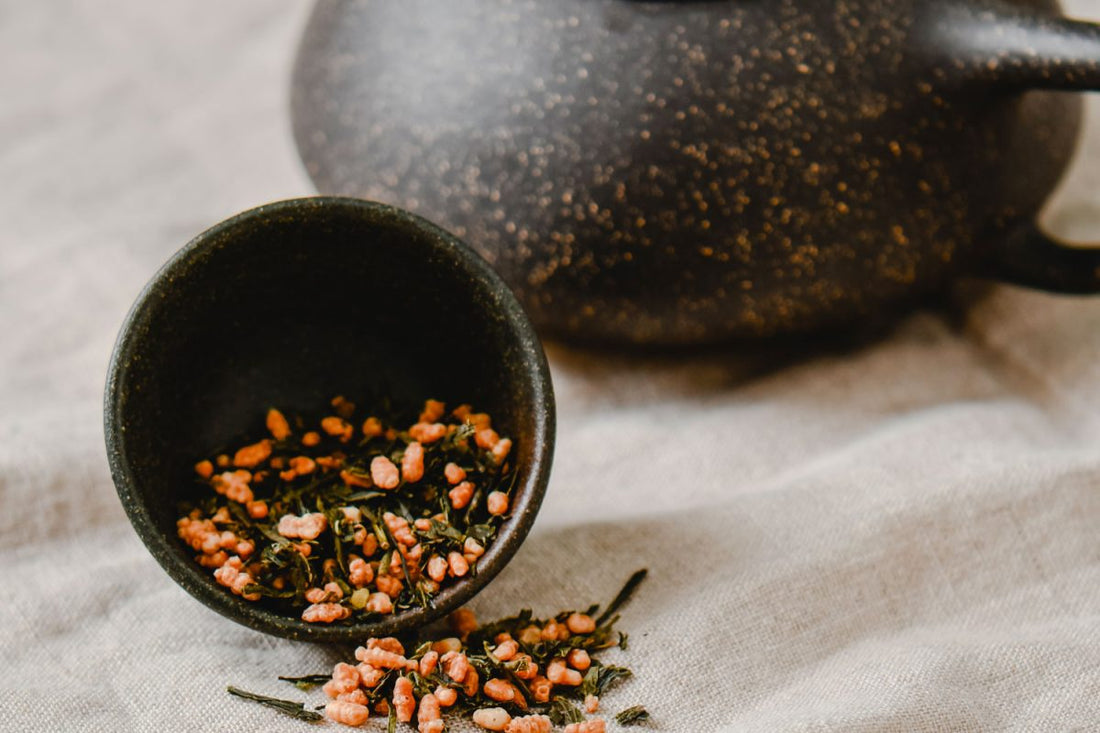Genmaicha is a traditional Japanese green tea that is made by blending sencha (a type of green tea) with roasted brown rice. The name “genmaicha” literally translates to “brown rice tea,” reflecting the tea’s key ingredient.
The origins of genmaicha can be traced back to the 17th century, when it was first consumed by the Japanese working class as a way to stretch their tea supply and make it last longer. The addition of roasted rice helped to reduce the cost of the tea, while also adding a unique flavor and aroma to the final product.
The traditional method for making genmaicha involves blending sencha leaves with roasted brown rice that has been crushed into small pieces. The mixture is then steamed and rolled to shape the leaves, before being dried and packaged for sale. The resulting tea has a yellow-green color and a unique nutty, popcorn-like aroma and taste.
Genmaicha is considered to be a lower grade tea than sencha, but it is still highly prized for its unique flavor and aroma. It is a popular choice for tea lovers who are looking for a more affordable alternative to higher-grade teas. It is also a great tea for those who are new to green tea, as it has a milder flavor and lower caffeine content than other types of green tea.
The health benefits of genmaicha are similar to those of other green teas. It contains antioxidants, which can help to protect the body against the damaging effects of free radicals. It also contains catechins, which have been shown to have anti-inflammatory properties and may help to lower the risk of heart disease and other diseases.
Genmaicha is a versatile tea that can be enjoyed both hot and cold. When served hot, it has a warm, comforting flavor that is perfect for a chilly day. When served cold, it has a refreshing and invigorating taste that is perfect for a hot summer day. It can be enjoyed plain or with a touch of honey or lemon, depending on personal preference.
To sum it up, genmaicha is a unique and delicious Japanese green tea that is made by blending sencha with roasted brown rice. Its origins can be traced back to the 17th century, when it was consumed by the Japanese working class as a way to stretch their tea supply and make it last longer. It is considered to be a lower grade tea than sencha, but it is still highly prized for its unique flavor and aroma. It is a popular choice for tea lovers who are looking for an affordable alternative to higher-grade teas, and also a great tea for those who are new to green tea. It has a milder flavor and lower caffeine content than other types of green tea and many health benefits. It can be enjoyed both hot and cold and is versatile to drink plain or with a touch of honey or lemon.






